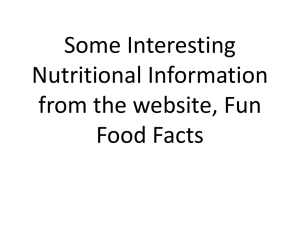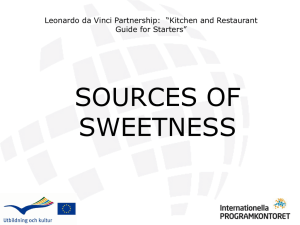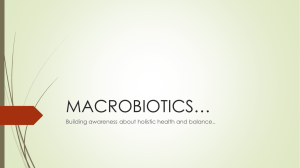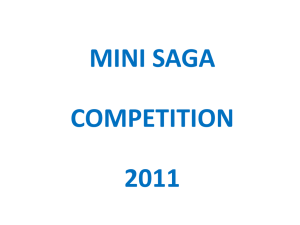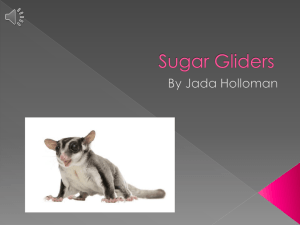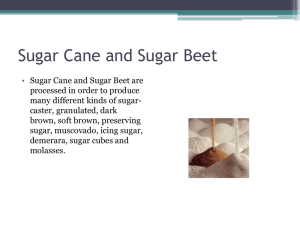Time, Sugar, and Sweetness
advertisement
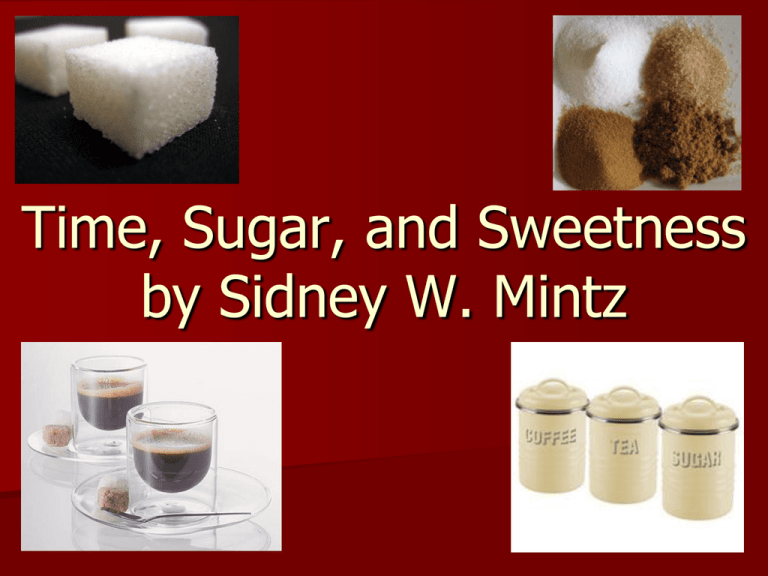
Time, Sugar, and Sweetness by Sidney W. Mintz Introduction Anthropologists have always been interested in the study of food and eating (re: Mintz) But today, there is an upsurge of interest on the study of patterned relationships between food and human groups Time, Sugar, and Sweetness Until the 17th century people from Northern Europe secured sweetness in food mostly from honey and from fruit. Sugar can be extracted from many sources, such as the sugar palm, the sugar beet, all fruits, and corn (HFCS). The white granulated sugar familiar today is made from sugar cane and sugar beets. The sugar-beet process was developed late, but sugar-cane processing is ancient. Time, Sugar, and Sweetness Sugar cane was grown: - in South Asia at least as early as the 4th C B.C. & by the 8th C A.D. around the Mediterranean ■ But it remained costly, prized, and less a food than a medicine. ■ Those who dealt in imported spices dealt in sugar as well. Sugar vs Honey Before Brittains had sugar, they had honey. Honey was a common ingredient in prescriptions and had also been used as a preservative. Honey also provided the basis of some alcohol drinks and sugar became an important alternative to these drinks. → Sugar soon bested honey. Time, Sugar, and Sweetness By the 13th century English monarchs had grown fond of sugar imported from the Mediterranean. Sugar entered into the tastes and recipe books of the rich. Variant Uses of Sugar Sugar was used as a condiment to flavor foods. As a medicine, it also disguised the bitter taste of other medicines. It was a preservative, which, when eaten with what it preserved, increased its caloric content By 1700, was sweetening tea, chocolate, and coffee, all of them bitter and all of them stimulants. Time, Sugar, and Sweetness During the Age of Discovery, Europe experienced a deluge of new substances, including foods. The sugar cane that originated in the Old World and was diffused to the New World and became an important crop after the 17th century. Sugar’s uses and the way it was perceived changed greatly over time. Time, Sugar, and Sweetness Sugar is linked to slavery & to economic growth: the sugar cane plantation profits were transfered to European banks. By the end of the 17th century sugar had become a costly English delicacy. Time, Sugar, and Sweetness The spread of sugar through the Western world is one of the truly important economic & cultural phenomena of the modern age. Sugar was one of the first luxuries to become common in proletarian diets as they filtered down from elite tables to the working classes that provided the labor for industrial capitalism Time, Sugar, and Sweetness 18-19th C. Industrialization, sugar became a cheap source of quick energy, forming part of a complex of « proletarian hungerkillers » Factory labor required changes in lifestyle for the new working class Factory-made jams & breads (quick, high-energy foods) replaced home-prepared food During Time, Sugar, and Sweetness « The availability of sugar was a function of economic & political forces remote from consumers & not understood as forces » Sugar shifted from the tables of the elite to the proletariat, offered calories, but no nutritional value Changing consumption must be seen as a result of capitalism & class domination Conclusion Commodity Fetishism: Society is divided by class interests with unequal distribution of power The conceptual separation of production & consumption and of colony from metropolis is unjustified—these linkages are present in time & space



